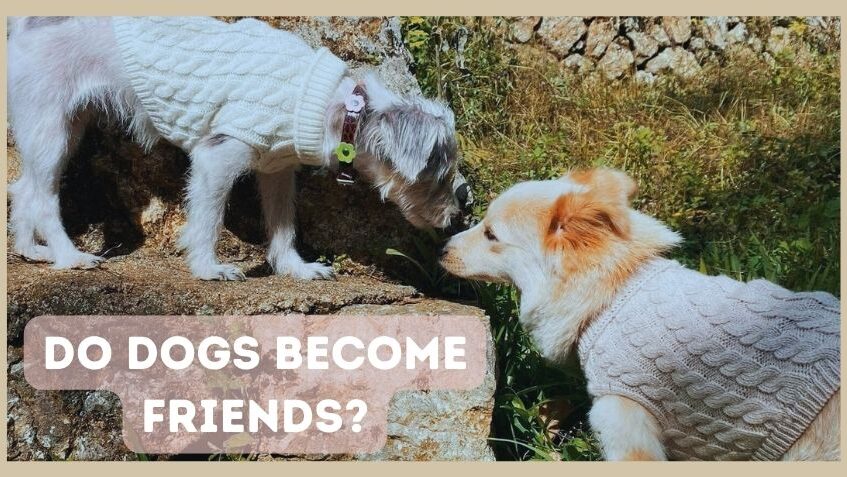Do Dogs Make Friends?
Dogs, like humans, can form friendships with other dogs and even with people. The process of dogs becoming friends is influenced by a combination of factors, including socialization, individual personalities, and positive experiences. Here’s how dogs typically form friendships:
Socialization: Early socialization plays a crucial role in a dog’s ability to form friendships. Puppies that are exposed to various dogs and people during their critical developmental period (usually between 3 and 14 weeks of age) are more likely to be comfortable around others and develop positive relationships. Proper socialization helps them learn appropriate social cues and behaviors.
Positive Experiences: Dogs are more likely to become friends with other dogs and people when they have positive interactions. These experiences can include playtime, shared activities, and rewards. Positive reinforcement, such as treats and praise, can strengthen the bond between dogs and their human or canine companions.
Similar Temperaments: Dogs often form friendships with other dogs that have similar temperaments or energy levels. For example, a playful and energetic dog may be more drawn to another dog with a similar play style, while a more reserved dog may prefer the company of calmer dogs.
Body Language: Dogs communicate primarily through body language. When two dogs meet, they engage in a series of body language cues to establish trust and comfort. These cues can include sniffing, play bows, and relaxed postures. Paying attention to these signals is crucial in understanding whether two dogs are getting along.
Shared Experiences: Dogs can bond through shared experiences. Going on walks together, playing fetch, or participating in group training classes are activities that can help dogs build positive associations with each other.
Time and Patience: Friendships take time to develop, whether between dogs or between a dog and a human. Consistent, positive interactions over time can strengthen the bond and lead to friendship.
Avoid Negative Interactions: Dogs may form negative associations with other dogs or people if they have had traumatic or aggressive encounters. It’s important to avoid situations that may lead to negative interactions and work on building trust and confidence gradually.
Supervision: When introducing two dogs, especially if one or both have not had much socialization or have had negative experiences, it’s essential to supervise their interactions to ensure their safety and prevent conflicts.
Remember that not all dogs will become best friends with each other. Dogs, like people, have their own personalities and preferences. Some may be more social and eager to make friends, while others may be more independent or selective about their companions. It’s essential to respect your dog’s individual personality and comfort level when trying to facilitate friendships.
You may also visit – https://www.facebook.com/angkopparasahayop





